<< Previous | Displaying results 5726-5750 of 6769 for "" | Next >>
Ustaša (Croatian fascist) soldiers oversee the deportation of a group of civilians from Kozara region to a concentration camp, in the pro-German fascist state of Croatia established following the partition of Yugoslavia. Croatia, between 1941 and 1944.

Children sit and sleep on the floor at Sisak, a Ustasa (Croatian fascist) concentration camp for children. Yugoslavia, during World War II.
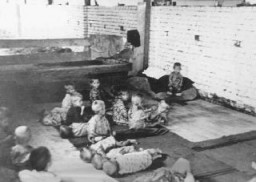
Victims of Ustasa (Croatian fascist) atrocities: the bodies of Jasenovac prisoners floating in the Sava River. Between August 1941 and April 1945.
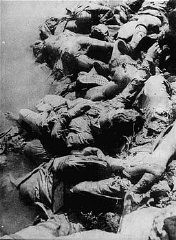
This photograph shows the aftermath of a shooting along the banks of the Danube River in Budapest. Members of the pro-German Arrow Cross party massacred thousands of Jews along the banks of the Danube. Budapest, Hungary, 1944.
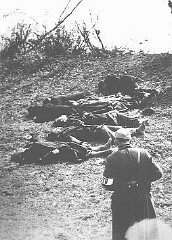
Jews from Bulgarian-occupied Macedonia interned in the "Monopol" tobacco factory, which was used as a transit camp. They were ultimately deported to the Treblinka killing center. Skopje, Macedonia, March 1943.
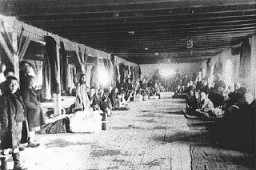
Jews from Bulgarian-occupied Macedonia and Thrace interned in the "Monopol" tobacco factory, which was was used as a transit camp. They were ultimately deported to the Treblinka killing center. Skopje, Macedonia, March 11-31, 1943.
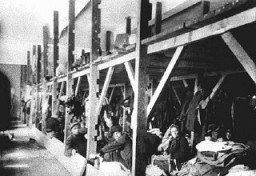
View of the courtyard in the Breendonk fortress prison where prisoners lined up for roll call. Breendonk, Belgium, postwar. This image is taken from a series of snapshots sold on the site after the end of World War II.
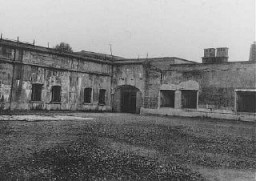
Map of Theresienstadt from an original document (1942-1945) and mounted in an album assembled by a survivor.
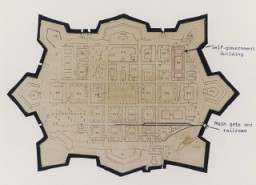
Departure of a train of German Jews being deported to Theresienstadt. Hanau, Germany, May 30, 1942.
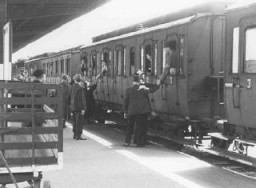
Preparation of food outside a barracks in Theresienstadt. Photograph taken after liberation. Theresienstadt, Czechoslovakia, June–August 1945.
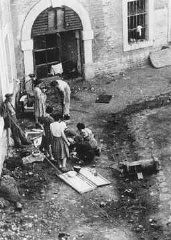
Women prepare food outdoors in the Theresienstadt ghetto. Theresienstadt, Czechoslovakia, between 1941 and 1945.
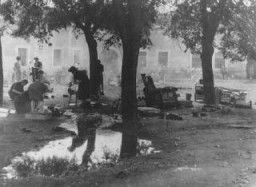
Living quarters in the Theresienstadt ghetto. Theresienstadt, Czechoslovakia, between 1941 and 1945.
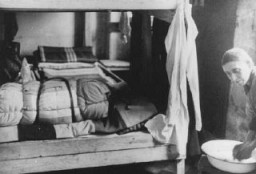
Women prisoners lie on thin mattresses on the floor of a barracks in the women's camp in the Theresienstadt ghetto. Czechoslovakia, between 1941 and 1945.

A transport of Jewish prisoners forced to march through the snow from the Bauschovitz train station to Theresienstadt. Czechoslovakia, 1942.
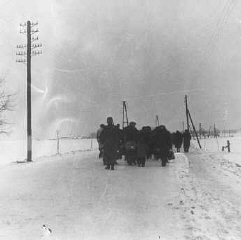
Dutch Jews who have recently arrived in the Theresienstadt ghetto. Czechoslovakia, February 1944.
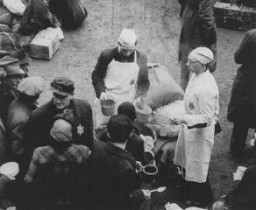
Standing room ticket for an opera performed on April 21, 1945, in the Theresienstadt ghetto.
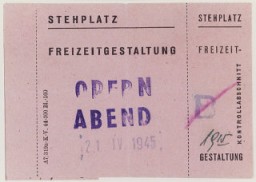
Red triangle patch worn by Czech political prisoner Karel Bruml in Theresienstadt. The letter "T" stands for "Tscheche" (Czech in German).
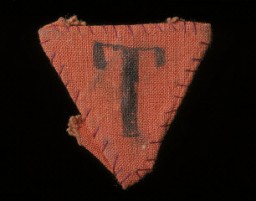
1942 portrait of Ita Guttman with her twin children Rene and Renate. When the twins were very young, the family moved to Prague. In the fall of 1941 the Germans arrested Ita's husband, Herbert. Subsequently, the twins and their mother were deported to Theresienstadt, and from there, to Auschwitz.
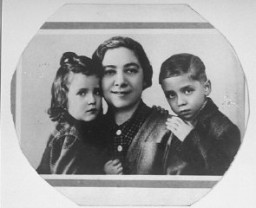
Children's painting showing of Jews celebrating Hannukah. This painting, which was probably drawn by either Michael or Marietta Grunbaum, was made in Theresienstadt and then pasted into a scrapbook by their mother shortly after liberation. Theresienstadt, Czechoslovakia, ca. 1943.
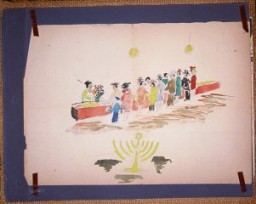
Photograph of the water tower of the Old Town Mills in Prague. After her deportation to the Theresienstadt ghetto in Czechoslovakia, Helene Reik yearned to record what was happening to her. This photograph was sent to Helene, who used it as paper for her diary in Theresienstadt. Helene’s makeshift diary offers wistful memories of her husband and parents who died before the war, loving thoughts of her family who had left Europe in 1939, and a firsthand account of the illness and hospitalization that…
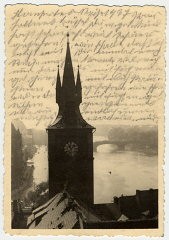
Allied delegates in the Hall of Mirrors at the palace of Versailles witness the German delegation's acceptance of the terms of the Treaty of Versailles. The treaty formally ended World War I. Versailles, France, June 28, 1919.
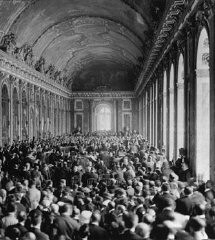
During the remilitarization of the Rhineland, German civilians salute German forces crossing the Rhine River in open violation of the Treaty of Versailles. Mainz, Germany, March 7, 1936.
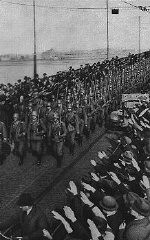
Jewish residents of the Szeged ghetto assemble for deportation. Szeged, Hungary, June 1944.
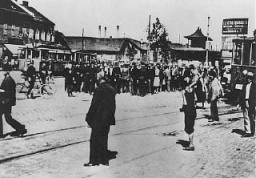
Jewish women, children, and the elderly await deportation at the railroad station in Koszeg, a small town in northwestern Hungary. Koszeg, Hungary, 1944.

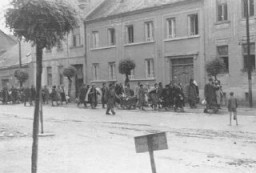
We would like to thank Crown Family Philanthropies, Abe and Ida Cooper Foundation, the Claims Conference, EVZ, and BMF for supporting the ongoing work to create content and resources for the Holocaust Encyclopedia. View the list of donor acknowledgement.